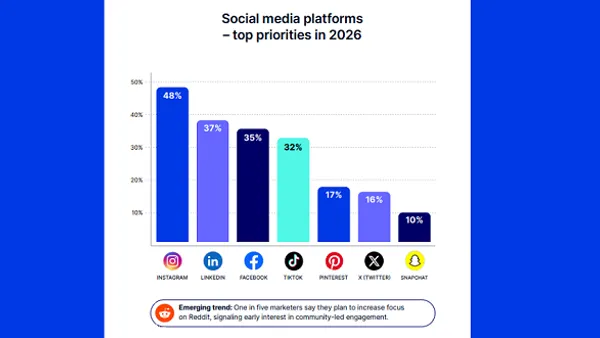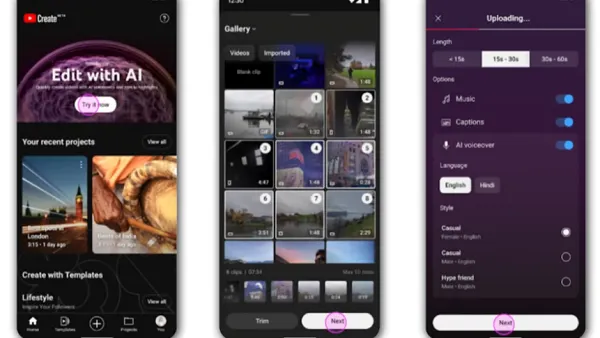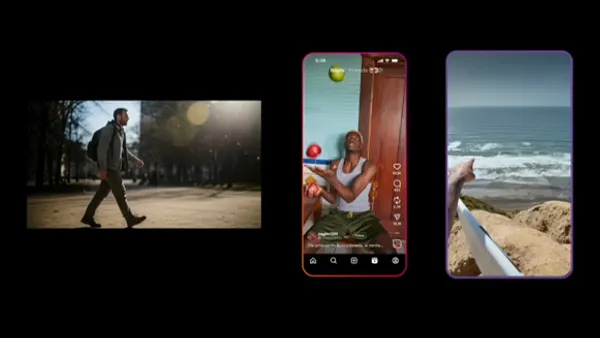
Creating original content is always a challenge because doing content right takes time. On top of that, brands need to maintain a publication schedule, both to ensure that they have fresh content coming out regularly, and to synchronize content with events, offers, and campaigns. With the competing priorities digital marketing teams face, creating great content, and keeping up with the content publication schedule doesn't always happen. In this post we'll look at three mistakes brands make related to content planning and publication, as well as ways to help fix those problems.
Mistake 1: Failing to Prioritize Content
Some content can't be pushed out to a later date. If a product launch date is coming up, or a holiday sale, or an event that happens on a specific day, you're going to have hard dates when content needs to be ready for publication. The core content that's needed to make the campaign work needs to be done and ready to go on the dates when promotion needs to start. That seems obvious, and it also seems obvious that core content would be prioritized first. The problem is that campaigns usually require many pieces of content, and even core content can get lost in the shuffle when this is the case.
How can core content get lost in the shuffle? The conversation goes something like this:
Manager: Friday we'll go out with our new product features list blog post.
Team member: It's not ready. We haven't been able to complete interviews of three of the feature owners.
<Awkward silence>
Manager: Ok, then let's go with our Slideshare of the new features.
Team member: We were basing the SlideShare on the blog post so that's not done either.
<Yelling>
Manager: Then let's publish the infographic on the new features.
<Awkward silence part deux>
Manager: Let me guess, the infographic is based on the SlideShare presentation isn't it?
The Fix: Add a Step to Create Content Flowcharts and Prioritize Content
When planning content for a campaign, it's amazingly easy for pieces of content to get lost in the shuffle. Getting those core pieces of content identified, and making them high priority so that those pieces get started, and completed, first is essential. For smaller campaigns, this can be done at the end of the brainstorming process by having the team identify those pieces that are core to the campaign. Make this prioritization an independent, and essential step in the planning process.
For more complex campaigns with a lot of content, we recommend a content flowchart. A content flowchart shows the dependencies between pieces of content. Taking the scenario stated above, it would show that the infographic can't be done until the SlideShare is done, and that the SlideShare can't get done until the blog post is done. That information would point to that blog post as a core piece of content that needed to be prioritized. Optionally, you can add any steps needed to complete the core content.

In the example above, writing a blog post about the new features of a product might require input or interviews from numerous members of the product team. That's something that's good to know. Product teams don't typically have a lot of time as launch dates draw near. Leaving a content creator to try can "catch a few minutes" with each feature owner is risky. It might be better to get supervisors involved and have all the stakeholders and the content team sit down over lunch to get all their questions answered. There are a number of ways to address those types of issues, but you'll never address them if you don't know they exist. Content flowcharts and core content prioritization can help you spot those potential issues.
Mistake 2: Not Having Short Content Pieces in your Content Plan
There are many types of campaigns that require deep, thorough, or technical content. Content that takes a lot of time to create. This type of content can and should be part of product launches, and even part of thought leadership campaigns - the deeper and more thorough you are, the smarter you look, right? While that's true, short content also serves a purpose. What we're talking about here is a single page blog post, a 2-minute video, an image with text overlay, or even a compelling tweet. For your audience, bite sized content such as knowledgeable quotations, or strong visuals are often compelling, and tend to get shared. Shorter content pieces also tend get consumed when people don't have time to engage with larger, more complex pieces of content. From a content development perspective, shorter content pieces can be created quickly and help you build up a repository of content.
The Fix: Include Short Content Pieces in your Content Plan
Some organizations are challenged by short content pieces - this especially seems to be the case for organizations used to creating longer, complex content. Either they can't come up with good ideas for short content, or the content isn't as high quality as longer content. When analyzing this with our clients, we've found two key factors that make shorter content pieces challenging:
- Planning: Some organizations assume short is easy so they don't plan for them. They might put some ideas in a grab bag document, and that's as far as it goes. Shorter content isn't necessarily easier to create. All content, short and long, needs to be planned the same way. Goals for the content need to be identified, topics brainstormed and selected, and outlines discussed, feedback solicited, authors assigned, and so forth. If you follow the same process for planning short pieces of content as you do long pieces of content, both types of content should end up being high quality.
- Ideas: Simply put, some organizations have difficulty coming up with topics that can be covered briefly. Fortunately, there are lots of places you can look for inspiration:
- Answer common customer questions. A good example is this short informational video by Home Depot.
- Show videos of how customer use your products.
- Create a tip of the day for a product or area of interest in your industry. Karen Yankovich publishes lots of short Quick Tips on Social Media Today.
- Comment on a published article from outside your organization. Provide your organization's perspective on relevant articles published about your industry.
- Overlay a compelling quote from previously published content on top of a compelling image. See General Electric's Instagram account for an example of a highly technical organization the knows how to create compelling, shareable images.
- Put industry stats in a short, simple stat graphic. See this article from Co.Design on digital posters (what we call stat graphics) versus infographics.
- Look for inspiration from competitor's other content sources. Let the topics and content you find from others inspire your own.
A great tool for finding content ideas, as well as influencers is Buzzsumo. With Buzzsumo, you can search by keywords, domains, and other criteria to find content, see what topics are popular, and who's sharing them.
Mistake 3: Not Having Backup Posts Ready in Case Content Slips
It's simple, if you're creating content to publish, some pieces will slip past their publication dates. It will happen. Someone will get sick. An interview will be rescheduled. The content will go down some unforeseen path, or the focus of the piece will get changed mid-development. Sometimes a piece of content just grows much larger in production that it looked in the outline.
The Fix: Plan for Slips and have Alternative Content Ready
The best way to mitigate the impact is to plan for it. No-one wants to miss a publication date, but a savvy social media manager anticipates it and has other content completed and ready so that it can be published in its place. This is where the fix for mistake 2 becomes the fix for mistake 3. Remember we said that having shorter content in your plan helps you build a repository of content? This is where you use it. Not only should you plan shorter content, you should set content developers to work creating shorter content in parallel with larger content pieces immediately so that you have content that can be published if something slips.
This doesn't always work. Some content pieces need to be published on time to meet their goals. Core content, is core for a reason. But, in a longer running campaigns, there are often content pieces that aren't tied to specific events, they're designed to sustain campaign momentum. In that case, if something isn't done, it's often better to push out the publication date, and ensure the piece is thorough and high quality. In that case, having alternative content to publish helps you continue the cadence of your campaign with fresh content.
Conclusion
Planning your marketing content has to be done with an awareness of the pitfalls inherent in the content development process. Prioritizing core content, ensuring that it gets done on time, including well planned short content pieces, and building a repository of completed content can help maintain your campaign's publication schedule, and ensure your audience is engaged with new content.
Over to You
If you've experienced some of these pitfalls or have implemented other processes to address them, let me know in the comments.









